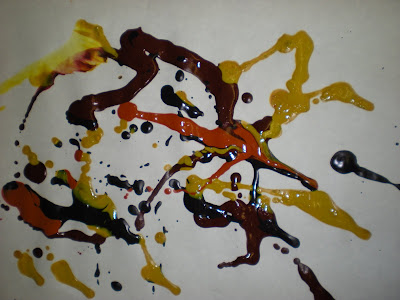
Many of my students have a limited comprehensive level but I want them to be as involved as possible in creating their own artwork. This is where these colored crayon cutouts have become endlessly handy. For my students its best to give them a choice between two different colors and have them pick one. You need to learn how each student makes a choice if they are unable to speak. Some students grab the card they want; others turn their head or eyes towards the desired color. And I also have others who will smile when the right color is presented.
These are the simplest things in the world but I use them on a daily basis.






